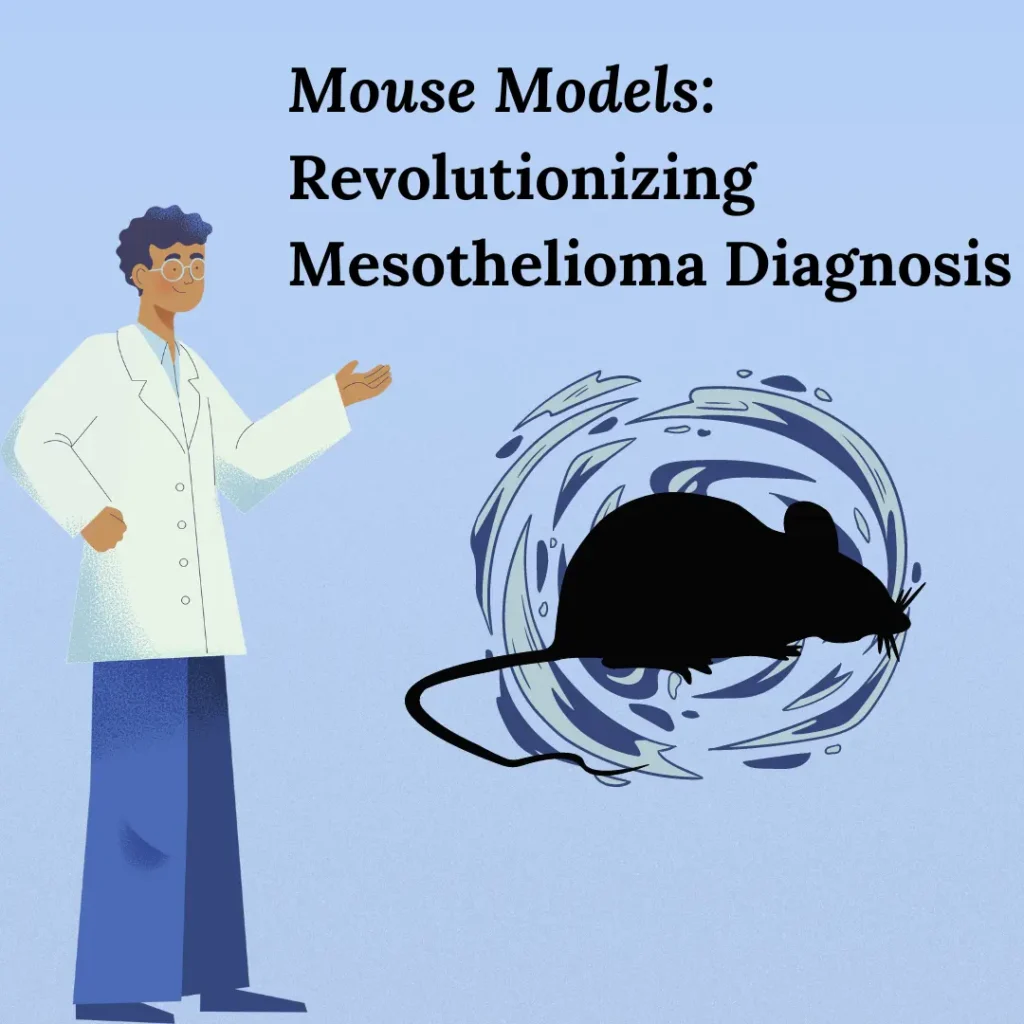Key takeaways: Mouse models help scientists understand the safety and efficacy of new treatments before employing human use. Dr. Daniel Murphy has discovered a genetic combination that will result in a 100% chance of mice developing mesothelioma after being exposed to asbestos. This means that scientists can track the development of mesothelioma before a mesothelioma diagnosis can be formally made.

What is a Mouse Model? Are they Relevant?
Mice are useful models for human physiology, as they are mammals that share similar genetic panels to humans. This means that drugs, surgeries, and modifications to bodily needs will (for the most part) be accurately reflected in mouse models. Usually, mouse models are utilized prior to clinical trials to ensure the safety and relative efficacy of new therapeutic techniques before they’re administered to people.
In mesothelioma research, mouse models account for an increase in treatment response rate of less than 10% to about 50% in the last three decades. This means that mice have increased the efficacy of treatments (and have laid the groundwork for new treatments) by over 40%. Importantly, mouse models usually aren’t predictive, meaning they can’t tell us more about a disease than we already know. This makes using mouse models difficult in the context of exploration or diagnostics, but doesn’t really affect their utility for treatment models.
Mouse Model Diagnostics?
As we’ve established, mouse models usually aren’t predictive. However, in the context of mesothelioma, researchers have found that early presentations of mesothelioma look (and act) similar in humans and mice. The phase right before mesothelioma onset and the beginning stages of the cancer present like inflammation, which makes sense: ingested asbestos causes chronic inflammation of the linings of body cavities. This inflammation, scientists hypothesize, is what causes mesothelioma tumors to develop in the first place. Despite knowing this, it’s difficult to distinguish between inflammation that gives rise to mesothelioma and other kinds of inflammation, like pneumonia or lung cancer.
Up until this point, biopsies—samples of living tissue—have been the only way to certify a mesothelioma diagnosis. Although biopsies are the standard for credible diagnosis, still some cases of mesothelioma are misdiagnosed. If a biopsy only sweeps an area of inflammation, or a part of a tumor that is different than what’s expected of mesothelioma cells, then there’s a real risk of receiving an inaccurate diagnosis. Inaccurate diagnoses mean that mesothelioma isn’t treated promptly, which can decrease overall survival and compromise the patient’s quality of life.
Mesothelioma Diagnosis Using Mouse Models
Dr. Daniel Murphy is working to address the diagnostic model of mesothelioma via mouse research. Researching the oncogenesis of mesothelioma is just as important as researching treatment options: if we can understand how to track, interfere with, or reverse the effects of chronic asbestos-induced inflammation, then treatment becomes secondary. Dr. Murphy established a combination of genes that, when a mouse is introduced to asbestos, it’ll develop an analog of mesothelioma in 100% of trials. This has several implications: for one, scientists can roughly identify which genes contribute to mesothelioma development. Additionally—and most importantly—scientists can use these mice to study how “pre-mesothelioma” looks, behaves, and manifests as. These findings can inform new screening measures for people that have been exposed to asbestos but haven’t developed mesothelioma. Additionally, these findings will help establish the exact mechanisms by which inflammation leads to mesothelioma tumors.
Dr. Murphy is aiming to use his findings—which are still in the experimental phase—in order to develop a screening process for identifying (and eventually reversing) the carcinogenic process. In this way, the mouse model could revolutionize the ways in which we think about a.) the genetic factors that culminate in a mesothelioma diagnosis; b.) stopping mesothelioma before it develops; and c.) how treatment models might eventually become prevention models.
If you or a loved one has been diagnosed with mesothelioma or another asbestos-related disease, we are here to help. Our website offers useful information regarding types of asbestos-related diseases, hospitals to receive treatment in Pennsylvania, a variety of different treatment options, and more. For more information or for legal help, please call us at (800) 505-6000 or simply fill out our contact form.
Sources:
https://www.ncbi.nlm.nih.gov/pmc/articles/PMC4522464
https://www.frontiersin.org/journals/pharmacology/articles/10.3389/fphar.2022.858557/full